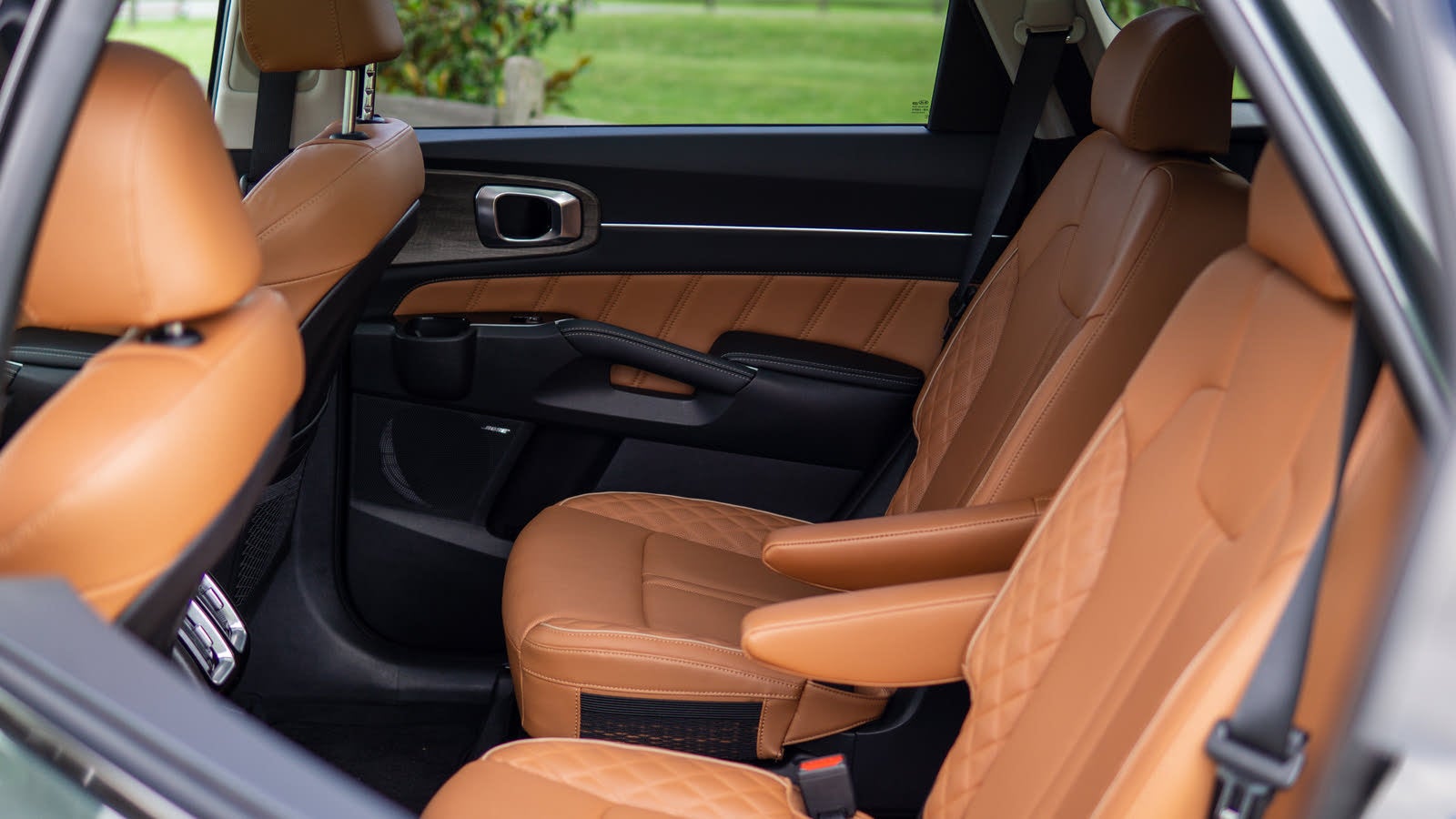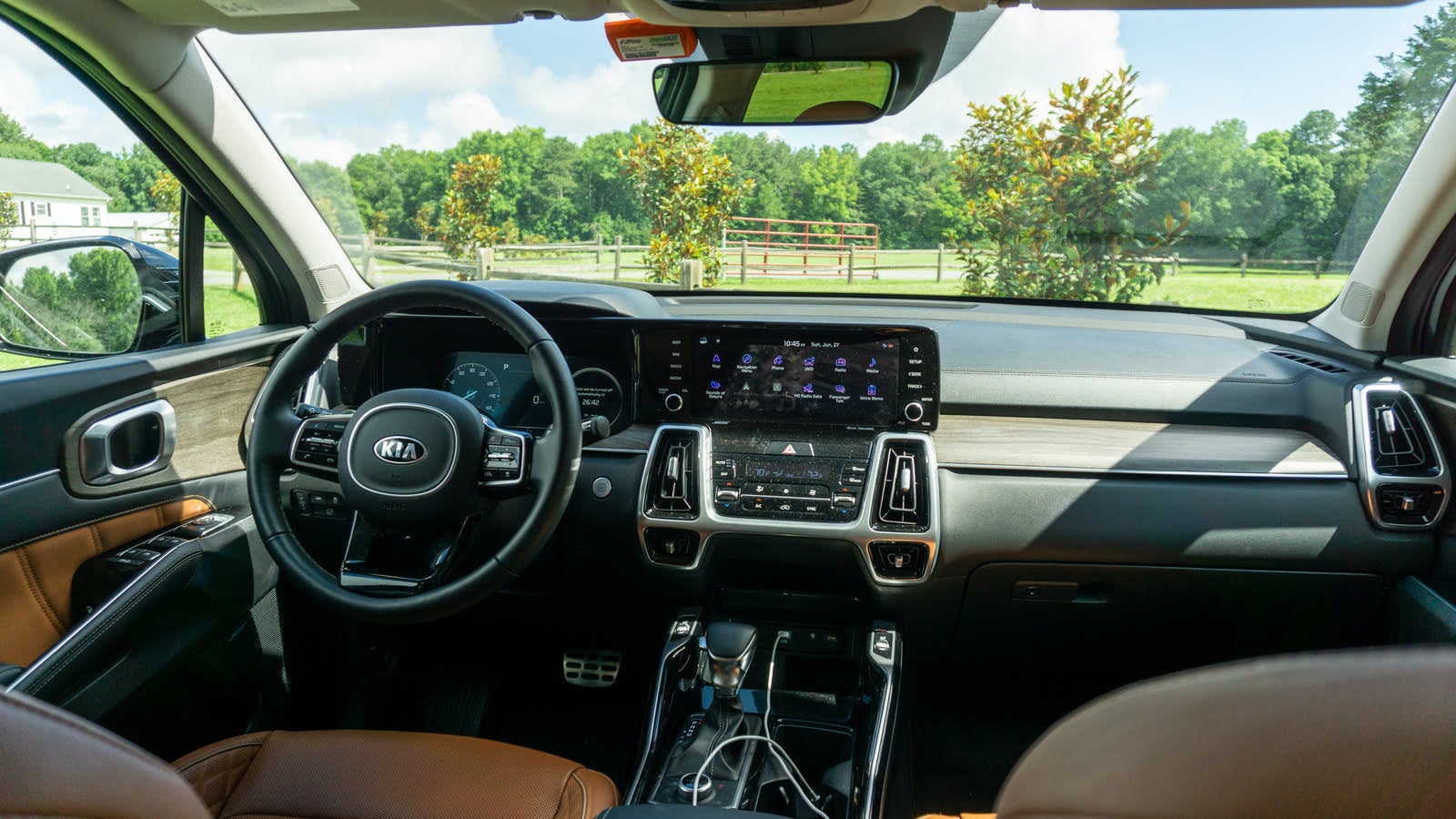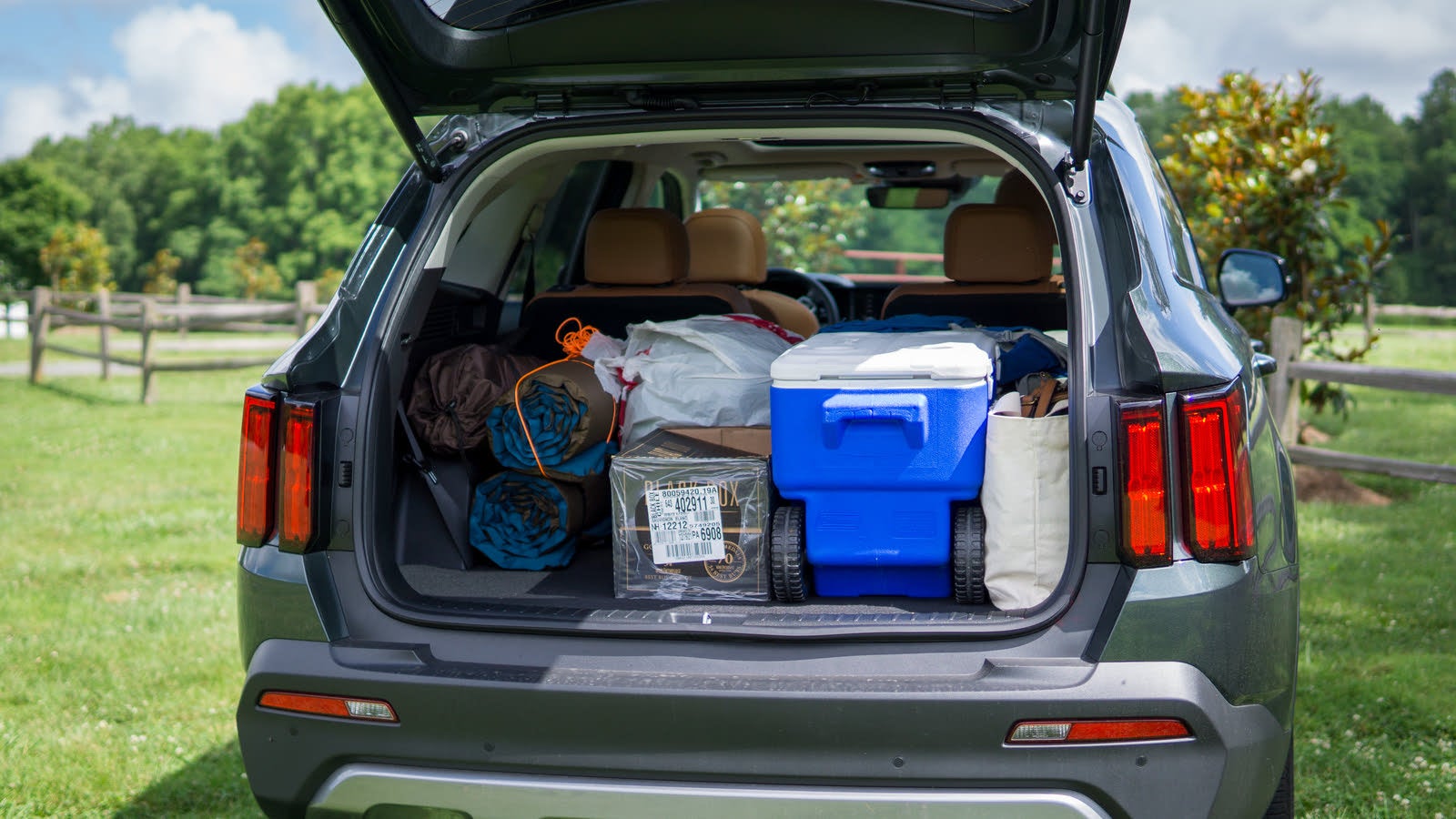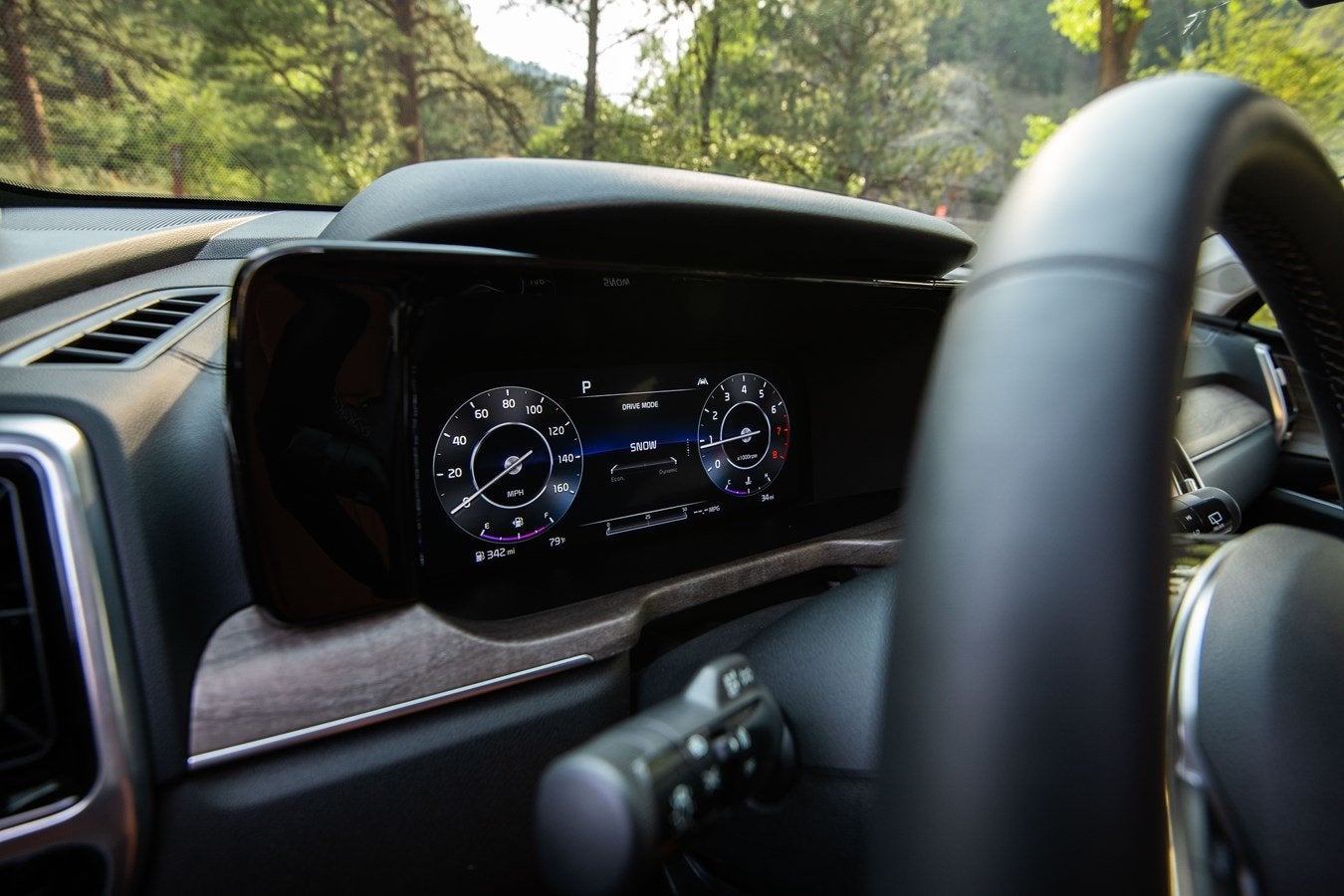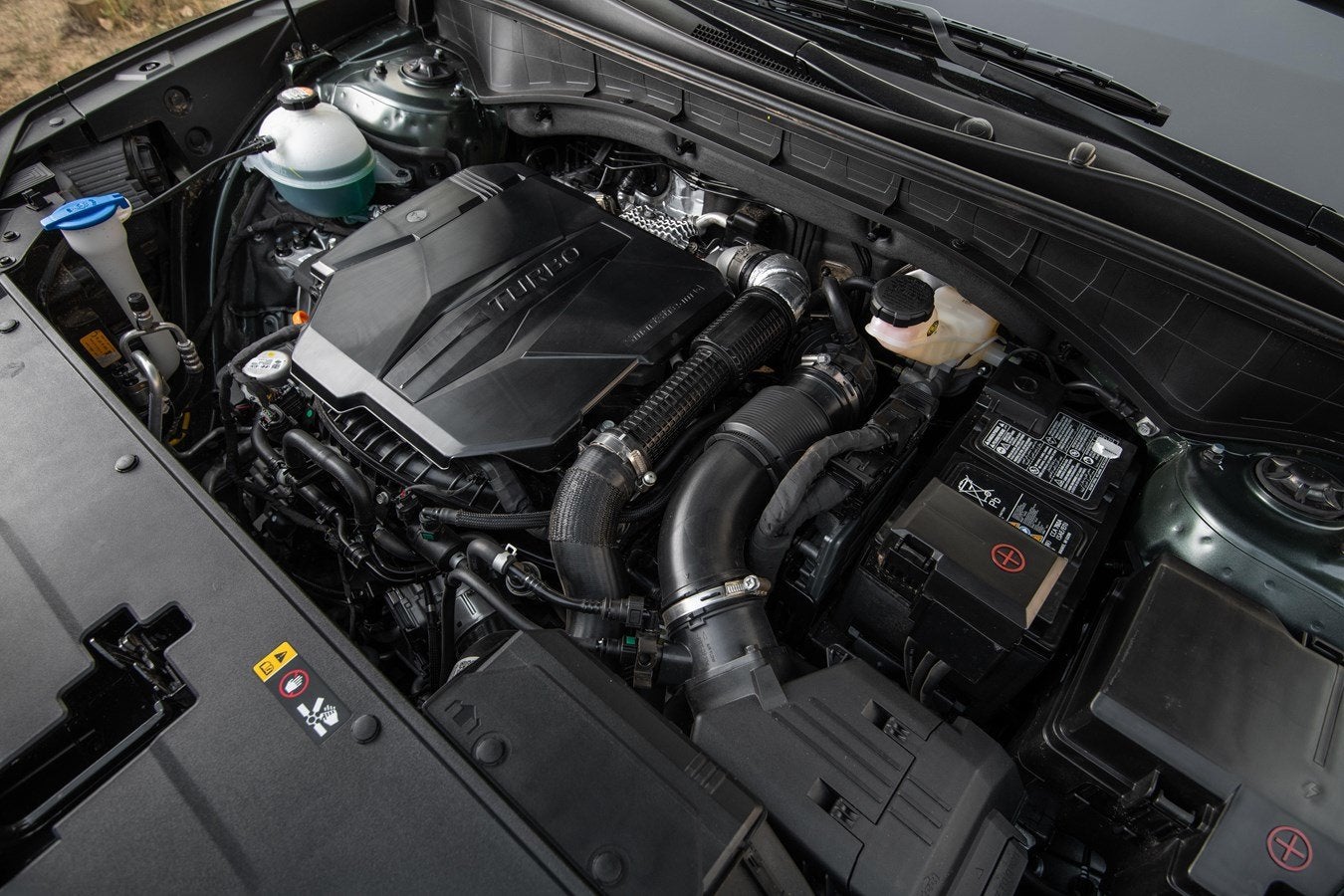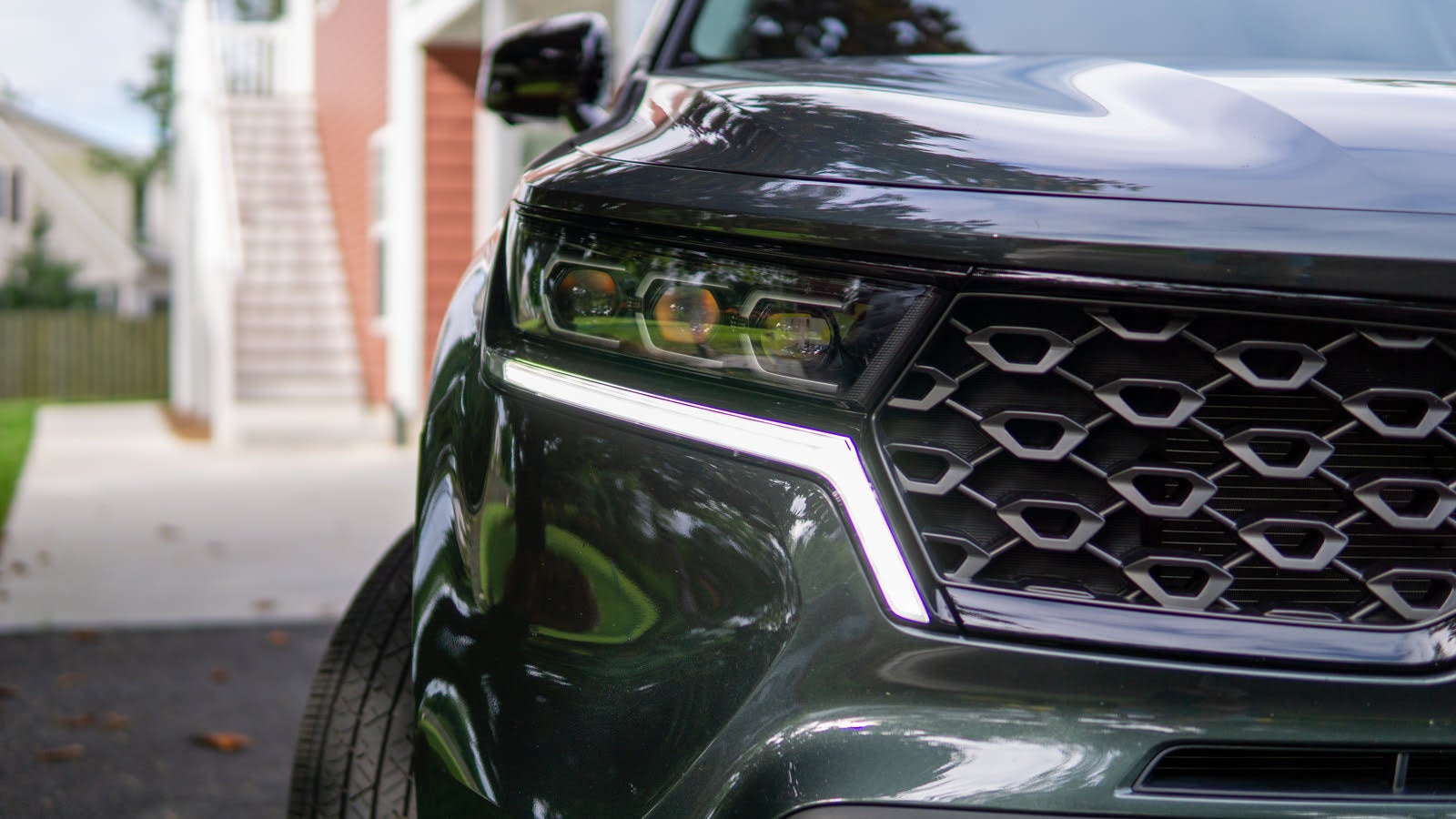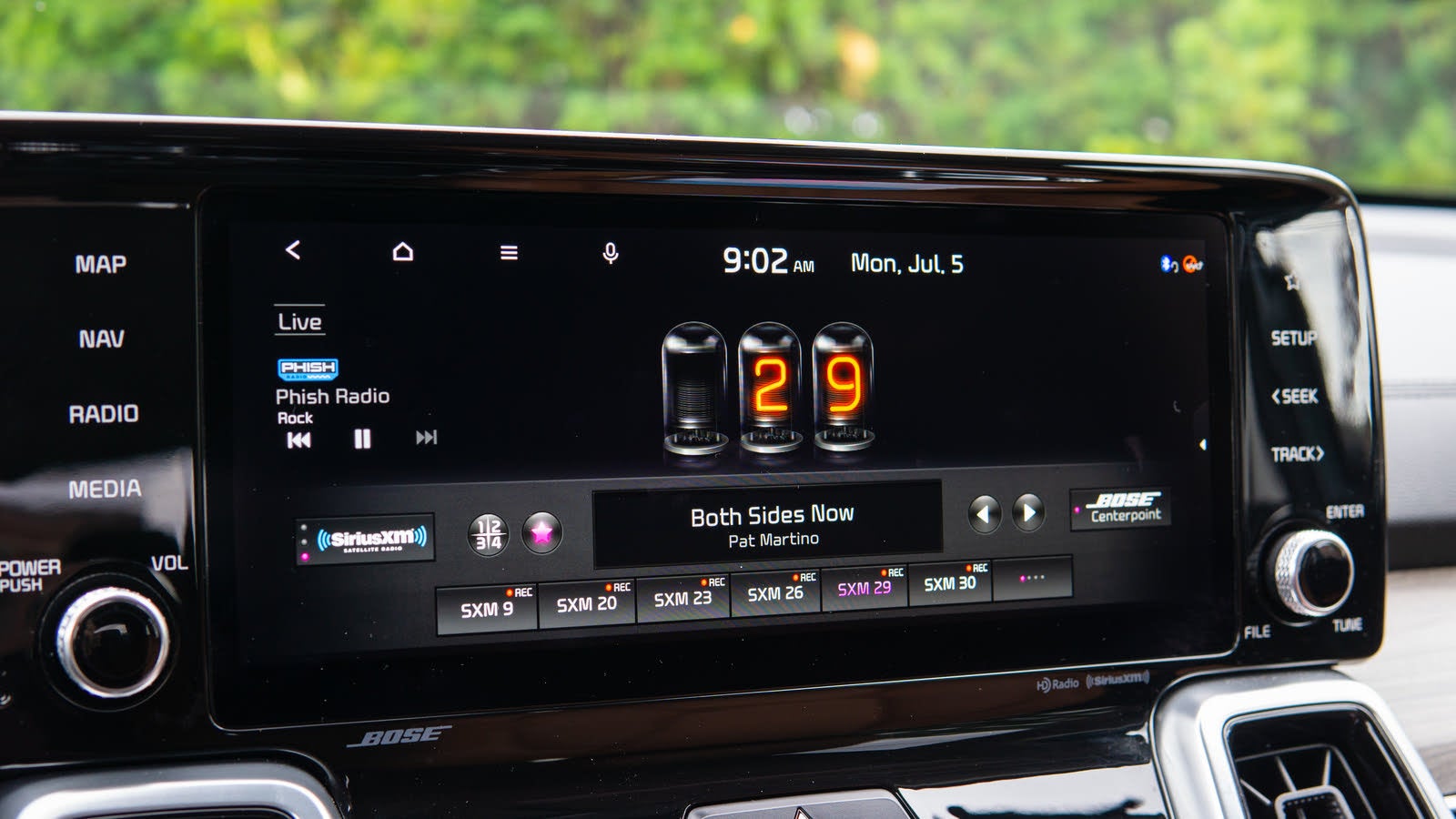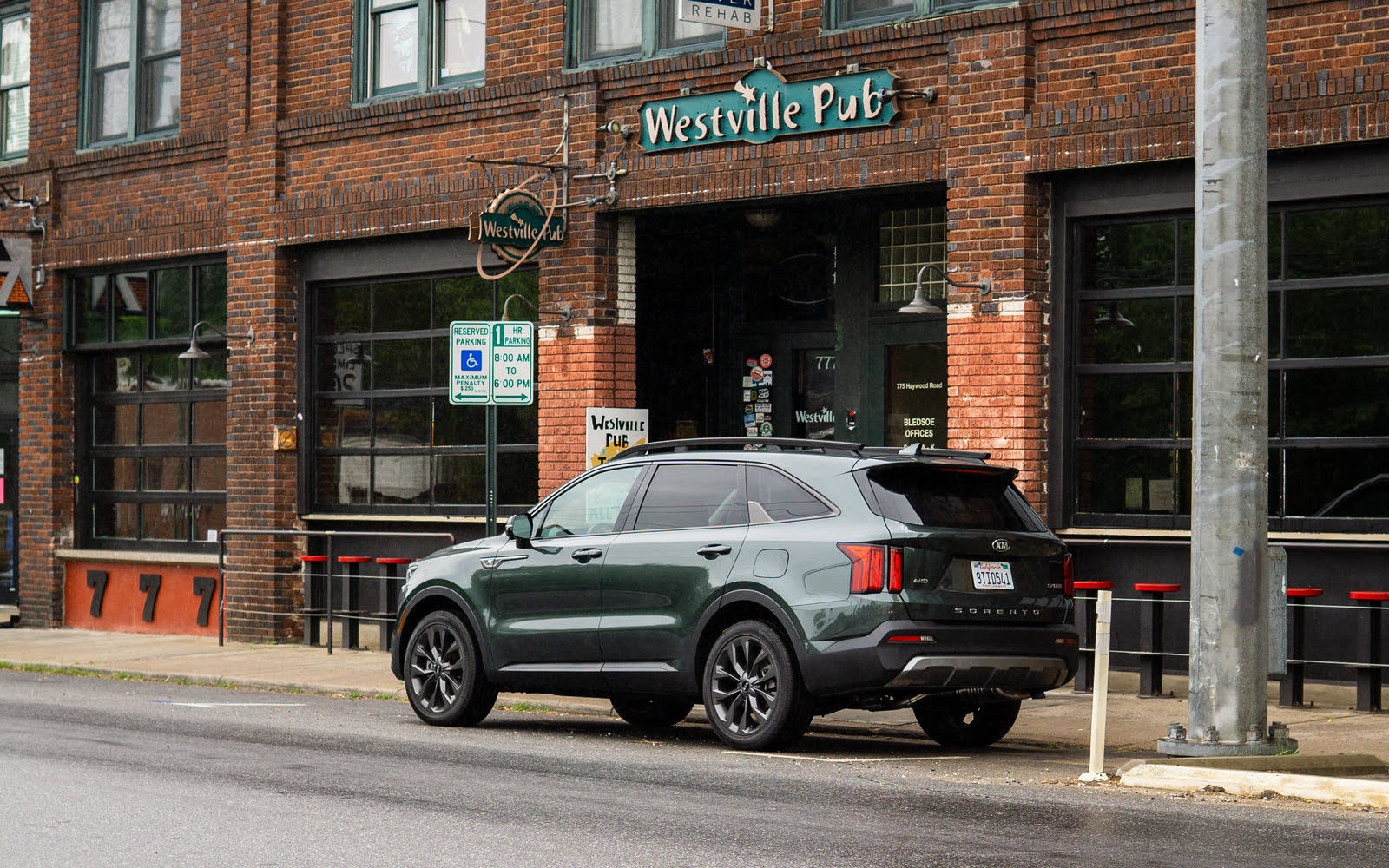Since the advent of the automobile, more than 100 years ago, the road trip has been a pivotal part of travel and culture. From I-95 stretching along the east coast, Highway 1 winding its way up and down the west coast, and historic route 66 spanning much of the width between the two, we’ve relied on roads to get us from point to point.
Top Road Trip Hacks
Seat and Steering Adjustments Power and Connectivity Cargo Space Advanced Driver Assistance Systems Features That Don’t Matter (Much) Advanced Driver Assistance Systems Planning Your Route Give Yourself Plenty of Time Go Out of Your Way for Experiences
While air travel has made our trips much speedier, the road trip remains a staple of countless vacation and travel plans. But our cars have progressed a long way since the days of the Model T, and road-tripping tips and tricks have evolved along with them.
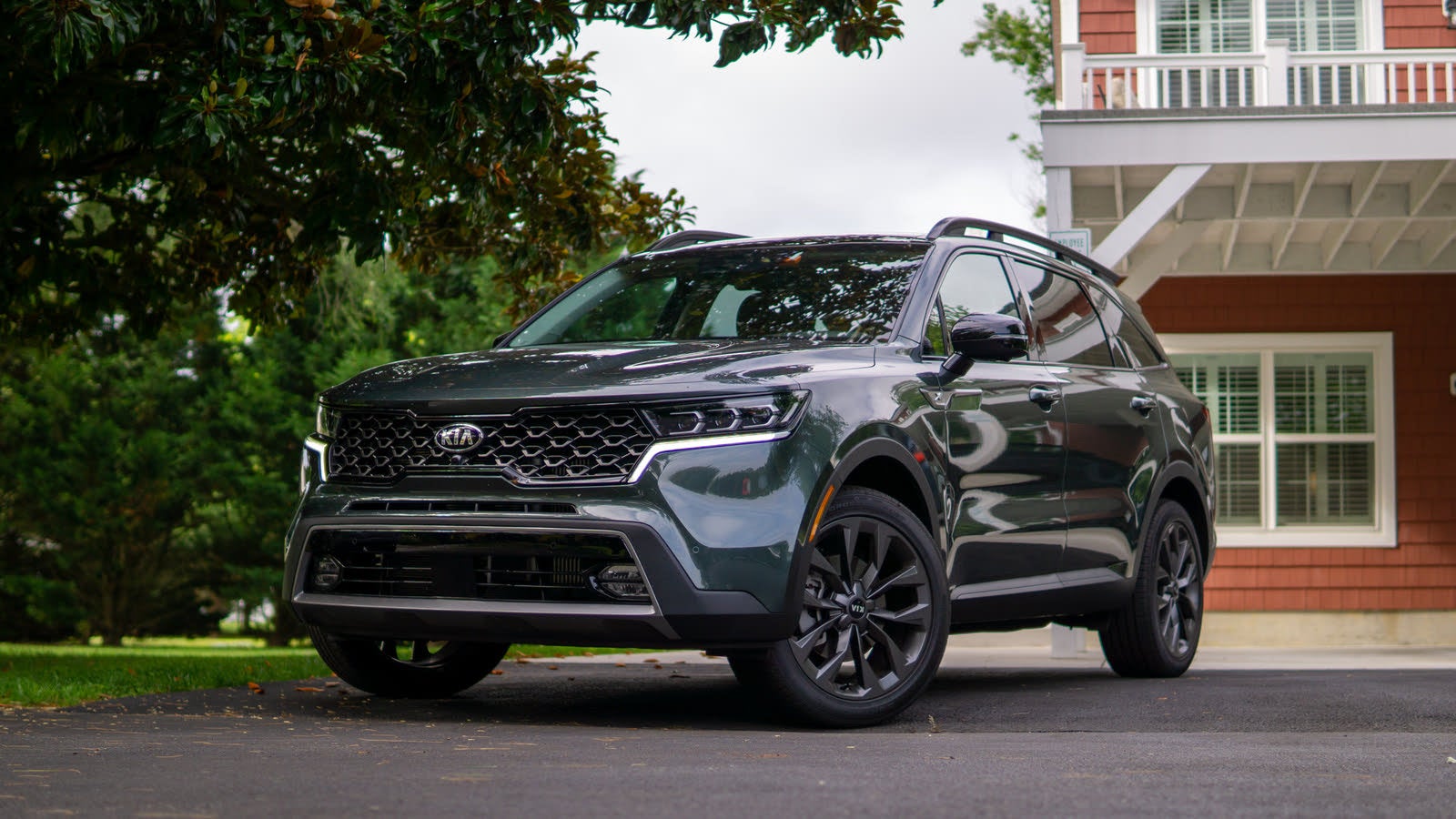
To determine the key hacks for a successful road trip, we took a Kia Sorento on a 2,100-mile drive from New England to North Carolina along the eastern seaboard. To close the loop, we ventured north into the Appalachian Mountains, trundled along Virginia’s Skyline Drive, stopped through New York City, and cruised back to our home base in Cambridge, Massachusetts.
Along this trip, we learned what vehicle features and specs matter, which ones don’t, and how to plan a route. Whether you’re traveling 200 miles or 2,000, these hacks will help you enjoy your next long drive.
What to Look for in a Road Trip Vehicle
Without a doubt, your most important consideration when choosing a great road-trip car is the degree to which it keeps you and your passengers comfortable.
Seat and Steering Adjustments
The most basic cars today typically offer at least four-way adjustments. At a minimum, seats will slide forward and backward, and their backrest will recline. However, step up to more adjustable seats if possible. Seat-height adjustment is critical for long-term comfort, as it allows you to relieve pressure on your thighs (in fact, some luxury models like the Lincoln Aviator now offer thigh extenders for each individual leg). Don’t discount lumber support, either. While stiff support at your lower back might feel awkward to start, you’ll discover it’s a blessing after a few hours behind the wheel.
Thanks to its X-Line package, our 2021 Kia Sorento SX Prestige offered 10-way power adjustments and 2-way lumbar adjustment for both the driver and the front passenger. Regardless of trim level, the Sorento also provides a tilt- and telescoping steering wheel. This feature is critical and, thankfully, very common. Just as you’d adjust your mirrors before setting off, be sure to adjust your steering wheel as well. Having your hands set at the correct angle can hugely add to your comfort level on a long drive.
Power and Connectivity
The last thing you want on a road trip is a phone with a dead battery. When selecting a car for your next road trip, make sure it has enough charging ports for your needs. Most vehicles today still offer only USB-A ports for power and connectivity, but some automakers have begun including USB-C ports, which are able to charge devices at a much faster rate.
If you’re traveling with children—in fact, especially if you’re traveling with children—be sure that your vehicle includes charging ports for rear-seat passengers. You’ll thank us later (after your child’s iPad never runs out of juice).
Finally, don’t forget that most vehicles now offer Android Auto and Apple CarPlay, as well. These systems effectively project your smartphone onto the vehicle’s infotainment display, and they make accessing music, making phone calls, and using navigation very simple. With Android Auto running in our Kia Sorento tester, we particularly enjoyed employing “Hey Google” commands to make calls, find local restaurants, and play music.
Cargo Space
Truth be told, we nearly borrowed a Ford Mustang Mach-1 for our road trip test. We’re confident the Mustang would have been an absolute blast to drive, and it would have provided an unforgettable experience, but in the end, borrowing a Kia Sorento was undoubtedly the wiser choice.
Simply put, we needed a vehicle that could take two people (no problem for the Mustang) and their luggage, camping equipment, a 38-quart cooler, a garment bag, and—we’re not kidding—a box solely for shoes. With this level of cargo, the Mustang would have been bursting at the seams. With 75.5 cubic feet of total cargo room the Sorento handled it with ease.
When selecting a road-trip vehicle, consider what you need to bring with you and what you plan to take home. Pack your car too full, and you won’t have room to bring home any keepsakes, souvenirs, or a cute welcome mat you found in the basement of an Asheville, NC shop.
Advanced Driver Assistance Systems
These little bits of technological magic, also known as ADAS, can seem gimmicky at first, but along a 4- or 6- or 8-hour day of driving, they become immensely convenient and, potentially, life-saving options. Lane-keeping assist helps adjust steering inputs automatically to keep your vehicle between the lines of its lane. Adaptive cruise control sets your vehicle at a specified speed, automatically slows the car when another vehicle appears in its path, and accelerates back to the desired speed when the impeding vehicle moves out of the way. Combine the two, and focused drivers will find themselves feeling refreshed at the end of the day.
Seek out a vehicle with ADAS features like lane-keep assist and adaptive cruise control when preparing to take a road trip. To take things even further, you can also find cars with blind-spot monitoring, automatic emergency braking, and lane-tracing assist, the latter of which literally helps steer the vehicle through turns. These features likely represent the most significant advancements in technology and can turn a 2,100-mile slog into an enjoyable vacation.
Features That Don’t Matter (Much)
Performance: Yes, a big mound of horsepower and a huge wad of torque are fun and can make driving feel more exciting. But when you’re on a road trip, you’re likely going to value smooth, effortless operation more than high-engagement thrills. Find a car that’s easy to drive for a long time, not one that’s fun to drive for a short time.
Fuel Economy: By no means are we recommending that drivers forgo a 55-mpg Toyota Prius Prime in favor of a 13-mpg Dodge Charger SRT Hellcat Redeye Widebody. One would cost roughly $100 to drive our road trip route, while the other would be closer to $400. However, if the choice is between a 40-mpg commuter car with cheap seats and limited cargo space or a 28-mpg crossover providing ample comfort and space… well, we say take the crossover.
Most road-trip miles will take place at highway speed, where non-hybrid vehicles operate most efficiently. Find a vehicle that can manage decent mileage on the highway and focus on what matters most after that. After all, compared with flying, driving will almost always be the more frugal option; in the non-hybrid 2021 Kia Sorento, our road trip cost us a mere $220 in fuel.
Navigation
On-board navigation systems were once a high-value, high-cost option found mostly in luxury models. While they’re still available, none are as good as Google Maps, which is both highly accurate and familiar to millions of users. Our Kia Sorento test car had an onboard navigation system. It looked great and offered plenty of features. We used it sparingly. Android Auto + Google Maps is just better.
Planning Your Route
Avoid Cities: Unless you’re sightseeing and are eager to climb the Empire State Building, See the Liberty Bell, catch a Baltimore Orioles game, or walk the National Mall, try to skip the cities. In what will come as a surprise to absolutely no one, cities are likely to be the most congested, traffic-filled segments of your road trip. Nothing ruins a day (or an ETA) quite like a ninety-minute traffic jam.
Give Yourself Plenty of Time
That said, traffic jams show up in the country, too. Some of the worst traffic we encountered on our drive was along Interstate 81 North through Virginia. Counter these unforeseen slowdowns by allotting more time than necessary each day. Not only will this help stem any anxiety if you hit a traffic jam, but it will free you up to enjoy those worthwhile roadside attractions.
Allocate Time for Rest Stops: Along our road trip, we determined that the typical day required an extra ten minutes for every hour of estimated driving time. Essentially, if our mapped route said it would take six hours, we assumed it would take seven. Sometimes it was because the Sorento needed fuel. Sometimes it was because we needed fuel. And sometimes it was just time to use the bathroom.
Depending on the length of your drive (and the age of your passengers) your estimate may vary, but our advice remains the same: assume the drive will take a bit longer than your navigation system predicts.
Go Out of Your Way for Experiences
Our first three tips were all about maximizing efficiency and avoiding surprises. Well, with this tip, we say “embrace surprises.” Planning ahead and avoiding traffic should free you up to make stops that you deem worthwhile, and in the end, these are what make road trips such a memorable form of travel.
On our way back to Massachusetts, we decided at the last minute to make a two-hour detour to visit Grayson Highlands State Park in Virginia. We wanted to take a hike on the Appalachian Trail and see wild ponies. Because we were ahead of schedule (and, truthfully, because we had become so comfortable in that Kia Sorento), we had no problem making the detour. We walked a gorgeous section of the trail, met a friendly (if a bit smelly) Appalachian Trail thru-hiker, and enjoyed one of the more memorable moments of our trip.
But we didn’t see any ponies.
The Bottom Line
Road trips remain a terrific and enjoyable way to see the country, spend time with loved ones, and experience new places. They’re also affordable and, with advances in vehicle technology, more comfortable and easy to undertake than ever before.
With the right car, the right attitude, and the right plan, you can ensure a great road trip. The only thing left to do is pick a destination.

